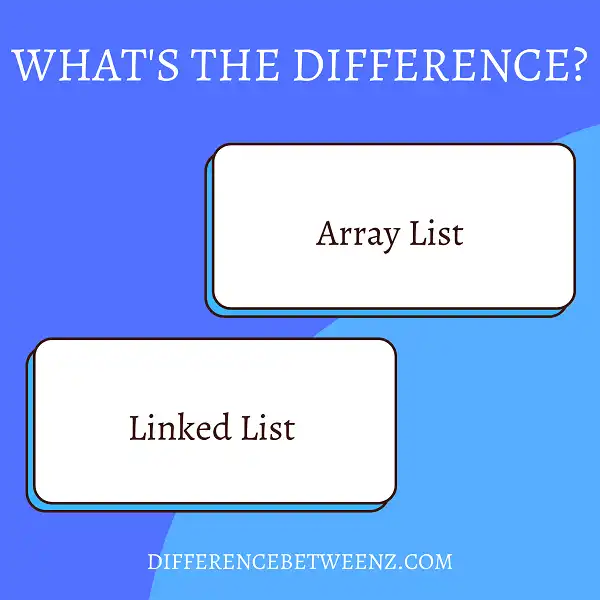There are two main types of lists in Java: Array List and Linked List. They both have their pros and cons, but which one is the best for your project? In this blog post, we’ll compare and contrast ArrayList vs LinkedList to help you decide. Let’s get started!
What is Array List?
ArrayList is a part of the collection framework and is present in java. util package. The ArrayList class implements the List interface and it is based on an Array data structure. It is widely used because of the functionality and flexibility it offers. ArrayList is capable of storing elements of all data types.
- This makes the ArrayList class very powerful and versatile as compared to other data structures like arrays. ArrayLists are created with an initial size. When this size is exceeded, the collection is automatically enlarged.
- When elements are removed from ArrayList, the empty space is left behind intentionally so that the addition of new elements can be done quickly without the need for resizing ArrayLists again.
- ArrayList guarantees that insertion order will be maintained however with Set collections like HashSet or TreeSet this guarantee does not exist.
- ArrayLists are not thread-safe which means they are not suitable to be used in concurrent applications where multiple threads try to modify ArrayList simultaneously.
To overcome this issue java provides a wrapper class Collections which has a synchronized list method that can be used to wrap any list into a synchronized list.
What is Linked List?
- A linked List is a data structure that consists of a group of nodes that together represent a sequence. Each node in a Linked List contains two pieces of information – first, the data element and second, the reference to the next node in the sequence.
- Linked Lists are very versatile data structures and can be used to implement other data structures like stacks, queues, trees, etc. Linked Lists have many advantages over other data structures like arrays – they are easy to insert and delete elements from, can be easily implemented in memory-constrained systems, and don’t require contiguous blocks of memory.
- However, Linked Lists also have some disadvantages – accessing elements in a Linked List is slower than an array, and Linked Lists also use more memory per element than arrays.
Difference between Array List and Linked List
Array list and linked list are two of the most commonly used data structure in java. An array list is backed by an array data structure while a linked list is backed by a linked list data structure. ArrayList is index-based, and LinkedList is object-based. ArrayList maintains insertion order, and LinkedList does not maintain insertion order.
- ArrayList can be manipulated using Index, but LinkedList cannot be manipulated using Index. ArrayList is faster than LinkedList if I/O operations are not considered, and LinkedList is slower than ArrayList if I/O operations are considered.
- ArrayList uses more memory when compared to LinkedList because every node in ArrayList stores the address of the next and previous node but, in Linked List only the next address is stored because it’s one-directional.
- Accessing an element in Arraylist is O(1) while accessing an element in LinkedList is O(n). Searching an element in Arraylist is O(n) while searching an element in LinkedList can be done in O(n) or O(log n) time depending on implementation.
Insertion and deletion of elements can be done quickly with Arraylist as it doesn’t require changing the address location of all elements after insertion or deletion like it happens in the case of Linked List videos where you need to change the address location of all nodes after insertion or deletion hence, making Arraylist operation faster than Linked List for these operations.
Conclusion
Array lists and linked lists are two different ways of storing data. The difference between the two is that an array list can only store a certain number of items, while a linked list can store an unlimited number of items. Another difference is that it is easier to access items in an array list than it is to access items in a linked list.
Finally, arrays are cheaper to use than linked lists because they don’t require as much memory. If you need to store a lot of data and you want quick and easy access to all of the items, then you should use a linked list. However, if you only need to store a few things and don’t mind sacrificing some speed for cost savings, then go with an array list.


